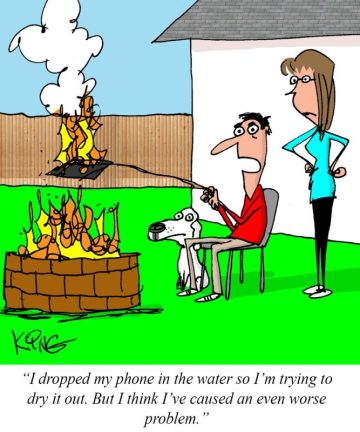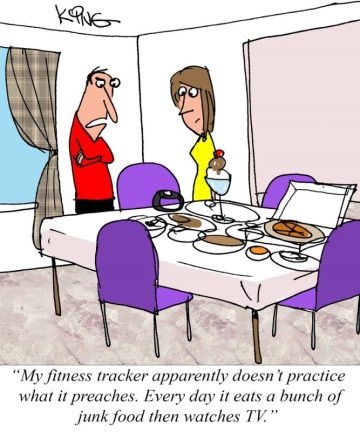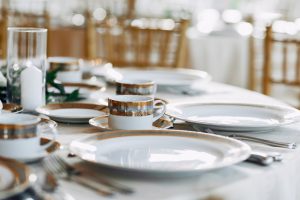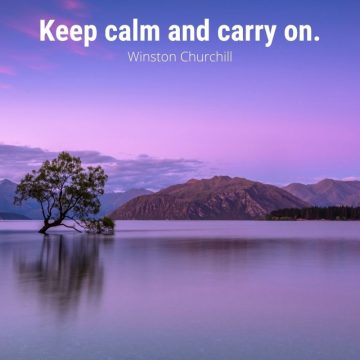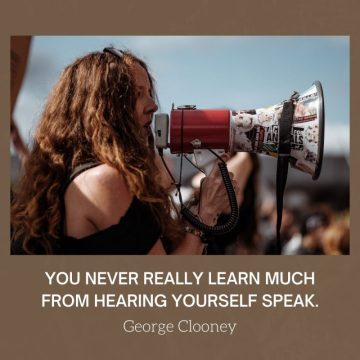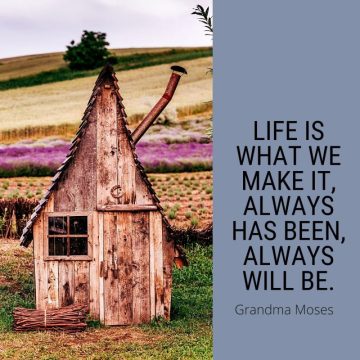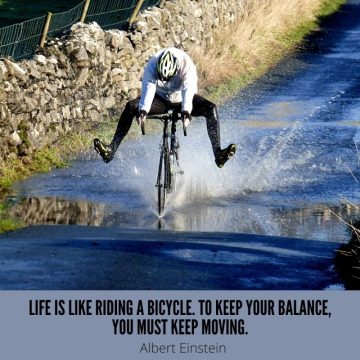Home
How to remove old wallpaper

Removing wallpaper is a home improvement project that seems challenging. However, with the right tools and a little know-how, it’s a task that almost anybody can complete. Here’s everything you need to know about removing old wallpaper using either water, solvents or steam.
What you’ll need
No matter which method you use to remove your wallpaper, you’ll need a few tools. These include:
• A wallpaper scorer to perforate the paper and allow the solvent, water or steam through.
• A scraper to separate the wallpaper from the wall.
• A spray bottle to apply solvents and water.
• A steamer, which can be rented or purchased. You can also use a clothes steamer.
How to do it
Gather your supplies and get to work. You’ll need to do the following:
• Prep the area. Cover anything you don’t want damaged by moisture, like your floors, baseboards, light fixtures and plugs.
• Peel off the facing. If the wall¬paper is coated in vinyl or plastic, start by peeling it off, if possible.
• Perforate the wallpaper. Using your wall¬paper scorer, make holes all over the surface of the paper.
If you’re using a commercial solvent (wall¬paper stripper) or water, do this next:
• Moisten a section. Spray the surface liberally with the liquid. Allow it to sit for 15 to 20 minutes.
• Scrape the wallpaper. Using your scraper, carefully separate the wallpaper from the wall.
If you’re using a steamer, you’ll need to do this:
• Turn on the machine. Wait for the water to boil.
• Apply the steam. Start with a corner close to the ceiling.
• Peel off the wallpaper. As you apply the steam, use your other hand to pull the paper away from the wall.
No matter what method you use, you’re bound to be left with a few stubborn patches that won’t come off. Using solvent, scrub any remaining bits of glue or backing from the wall. Once it’s dry, prepare it for a fresh coat of paint or new wallpaper.
Home
Stay Safe During Spring Yard Work: Tips for Common Hazards
Spring brings glorious weather and the opportunity to tackle yard work like mowing, gardening, and trimming. However, it’s important to stay mindful of safety hazards. The American College of Foot and Ankle Surgeons highlights the dangers of power mowers, injuring around 80,000 people annually. Here are some safety tips to keep in mind before diving into your spring chores:
- Get a Tetanus Shot:
Tetanus can cause serious health issues, including jaw spasms, muscle convulsions, and death. Make sure your tetanus shot is up to date. - Use Caution with Power Mowers:
Wear hard-toed shoes and keep children and pets away. Clear the yard of objects that could become dangerous projectiles when struck by the mower. - Use Ladders Safely:
Falls from ladders are common during spring tasks like tree trimming and gutter cleaning. Climb ladders empty-handed and have someone pass you tools once you’re in place. - Check Your Chainsaw:
Make sure both you and your chainsaw are in good condition before use. Never climb a ladder while holding a chainsaw or any sharp object. - Consider Hiring Professionals:
For tasks that require a lot of climbing or specialized skills, hiring professionals can ensure the job is done safely and correctly. - Lift Properly:
When moving heavy bags, lift with your legs by bending at the knees and lifting from within your feet’s span. Use carts or wheelbarrows to transport heavy items over longer distances. - Use Ergonomic Tools:
Opt for tools with ergonomic grips to prevent wrist injuries. Rakes, shovels, and trowels with arm fittings can make gardening safer and more comfortable.
Following these tips can help you enjoy your spring yard work while minimizing the risk of injury.
Home
Declutter Your Home with Smart Storage Solutions
Is your living space starting to resemble an obstacle course filled with clutter? It’s time to reclaim your home and enjoy the tranquility of a tidy, organized environment. You can efficiently organize your belongings and say goodbye to clutter with the right storage solutions. Here are some effective strategies to help you get started:
Transform Your Wardrobe with Organizational Systems
The key to a clutter-free bedroom starts with your wardrobe. Explore the wide range of organizational tools available at local hardware and big-box stores. These solutions can help you neatly store your clothing and accessories, from hooks and shelves to shoe racks and bins. An organized wardrobe saves you time and makes your space more inviting.
Opt for Multifunctional Furniture in the Living Room
Furniture that serves multiple purposes can significantly enhance your living room’s functionality and aesthetics. Consider a coffee table with built-in drawers and compartments for easy storage of remotes, books, and other small items. Ottomans with hidden storage compartments are perfect for tucking away magazines and throw blankets, while sofa beds with drawers offer an extra storage solution for linens and pillows. These pieces of furniture help keep your living area tidy and guest-ready at all times.
Utilize Innovative Bathroom Accessories
Maximize your bathroom’s storage potential with smart accessories designed to keep personal hygiene products organized and out of sight. Trays with dividers are great for organizing smaller items like toothbrushes and cosmetics, while towel bars and shelves offer a sleek way to store towels and washcloths. Don’t overlook the potential of vertical space; wall-mounted shelves and over-the-door storage can be lifesavers in smaller bathrooms.
Explore Local Shops for Creative Storage Ideas
Don’t stop at these suggestions—venture into your local shops to discover more clever storage solutions. Whether it’s a unique piece of furniture with hidden storage or an innovative organizational system, there is a world of options to help you maintain a clutter-free home.
A well-organized home looks great and promotes a sense of calm and order. By implementing these simple yet effective storage solutions, you can enjoy a cleaner, more organized living space that reflects your personal style and meets your daily needs. Start decluttering today and transform your home into a haven of tranquility and efficiency.
Home
Mastering the Art of Stain Removal: Home Remedies for Stubborn Stains
Dealing with stains can often feel like a battle, especially when it comes to substances that are notorious for leaving their mark, such as red wine, pen ink, coffee, and blood. But fear not! The world of home remedies offers several effective solutions to tackle these stubborn stains, restoring your fabrics and other materials to their former glory. Here’s a guide to some of the most common stains and how to remove them using ingredients likely already in your home.
Red Wine Stains
Red wine spills are a common party foul, but they don’t have to spell disaster for your fabrics. A mixture of baking soda and lemon juice can work wonders. Apply it generously over the stain and let it sit for about an hour before rinsing with cold water. Dabbing with white vinegar before rinsing can also be effective for dried stains.
Pen Ink Stains
Ink stains from a leaking pen need not be a death sentence for your clothes. Applying white toothpaste (not gel) or rubbing alcohol to the stain and rubbing vigorously can lift the ink. Alternatively, a paste made from milk and cornstarch applied to the stain and brushed off once dry can also be effective.
Coffee Stains
Coffee stains are a common morning mishap. To treat them, blot the stained area with a mixture of lukewarm water, dishwashing soap or laundry detergent, and white vinegar. Let the mixture sit for a few minutes, then wash as usual. For persistent stains, gently dabbing with rubbing alcohol can help remove any lingering discoloration.
Blood Stains
Dried blood stains can be particularly challenging. Soak the stained area in cool water mixed with white vinegar for about 15 minutes, then blot and rinse with clean water. It’s important to use cool water, as hot water can set the stain, making it nearly impossible to remove.
The Joy of Stain Removal
The process of removing a stubborn stain can be incredibly satisfying, transforming a marred item back to its pristine state. These home remedies not only save you a trip to the professional cleaner but also offer a sense of accomplishment in easily tackling household chores. Next time you’re faced with a daunting stain, remember these tips and relish in the satisfaction of making it disappear.
Home
Streamlining Home Renovations: Effective Storage Solutions for Your Belongings
Embarking on home renovations can transform your living space into a dream abode, but it also brings the challenge of safeguarding your belongings during the process. Whether you’re knocking down walls, updating your kitchen, or adding an extension, significant renovations mean you’ll need a safe spot for your furniture and other items to avoid damage and clutter. Here’s how to ensure your belongings are securely stored, making your renovation project smoother and protecting the items you love.
Choosing the Right Storage Option
- Professional Moving and Storage Services: Many moving companies offer storage solutions tailored for homeowners undergoing renovations. This option is particularly handy because it combines moving and storage, reducing the hassle of dealing with separate entities. Ensure the company is reputable and offers conditions like climate control if needed for delicate items.
- Self-Storage Units: Renting a self-storage unit provides flexibility and accessibility. Whether you need a locker for a few boxes or a mini-warehouse for an entire household, you can select the size that suits your needs. Look for facilities with strong security measures, such as surveillance cameras and controlled access, and consider the location carefully to ensure it’s convenient for frequent visits.
- On-Site Storage Containers: For those who prefer to keep their belongings close, renting a storage container that can be placed on your property is an excellent solution. This option offers easy access to your items whenever you need them. However, check your local zoning regulations and homeowner association rules to avoid any legal issues.
Making the Smart Choice
When deciding among these options, consider factors like the duration of your renovation, the value and sensitivity of your items, and how often you’ll need access to them. Additionally, weigh the convenience and cost of each storage solution against your project’s overall budget and timeline.
Protecting Your Belongings
Regardless of the storage option you choose, take steps to ensure your items are protected:
- Insurance Check: Verify with your insurance provider that your belongings will be covered while in storage. Some policies may require additional riders or adjustments for off-site storage.
- Secure Packing: Invest in sturdy boxes, quality packing materials, and take the time to pack your items carefully, especially fragile ones. Labeling boxes can also save you time and frustration when you’re ready to unpack.
- Regulatory Compliance: If opting for an on-site container, familiarize yourself with any local regulations or restrictions to ensure compliance and avoid fines or complications.
Conclusion
Renovations are an exciting time of transformation for any homeowner. By choosing the right storage solution for your belongings, you can ensure that the process is as stress-free as possible. Whether you opt for professional storage services, a self-storage unit, or an on-site container, the peace of mind knowing your items are safe and sound lets you focus on the exciting changes happening in your living space.
Home
The Ultimate Pantry Cleaning Guide: 7 Steps to Refresh Your Space
Tackling your pantry might seem like a daunting task, especially if it’s been a while since its last deep clean. However, with a systematic approach, you can transform this chore into a satisfying project. Whether you’re a seasoned home chef or someone who loves a well-organized space, follow these seven steps from cleaning and organization professionals to clean your pantry like a pro.
1. Empty Your Pantry
Begin by removing everything from your pantry. This step not only allows you to see all the items you have but also enables you to clean the space thoroughly. You might even find some hidden treasures or forgotten items in the process!
2. Sort Food by Category
Once everything is out, categorize your items. Group spices together, place all canned vegetables in one area and gather your cereals. This categorization will make organizing and locating items easier once they’re back in the pantry.
3. Check Expiry Dates
Go through each item and check its expiry date. Dispose of anything that’s out of date. For items without visible expiry dates, use a reliable source to check their shelf life. Ensuring that your pantry is free from expired goods is crucial for health and safety.
4. Clean Shelves and Walls
With the pantry empty, take the opportunity to clean the interior thoroughly. Use an all-purpose cleaner to wipe down the walls and shelves. This step helps remove dust, crumbs, and any spills, creating a clean base for your items.
5. Wipe Down Containers
Before putting items back, wipe down the outside of plastic and glass containers and bottles. This helps keep your pantry looking clean and ensures no sticky residues are transferred onto the shelves.
6. Organize Items Strategically
As you return items to the pantry, think about their placement. Keep frequently used items at eye level and group similar items together, such as canned goods or baking supplies. Consider using storage baskets for smaller items to keep them contained and easily accessible.
7. Clean the Pantry Exterior
Finally, don’t forget about the exterior of your pantry. Wipe down the doors, handles, and any outer surfaces to complete your cleaning project. This enhances the appearance of your pantry and ensures that it’s hygienic from the inside out.
A clean and organized pantry makes meal preparation more straightforward and helps minimize food waste by keeping your ingredients visible and accessible. Plus, the process of decluttering and organizing can be surprisingly therapeutic. So, roll up your sleeves and give your pantry the refresh it deserves. Happy cleaning!
Home
Bird Nesting: A Kinder Approach to Post-Divorce Parenting?
In the aftermath of a divorce, the well-being of the children involved is often at the forefront of parents’ concerns. Traditional custody arrangements typically involve children splitting their time between their parents’ separate residences and adapting to different environments, rules, and routines. However, an alternative method, “bird nesting,” is gaining attention for its child-centric approach.
Bird nesting flips the conventional custody arrangement on its head. Instead of the children moving between homes, they remain in the family home while the parents take turns living with them. Inspired by how birds take turns caring for their hatchlings in one nest, this concept aims to provide stability and continuity for the children during a potentially tumultuous time.
According to a study highlighted by Good Housekeeping, around 11 percent of parents in the UK have experimented with this arrangement. The appeal of bird nesting lies in its potential to minimize disruption in the children’s lives. Their daily routines, friendships, and even the comfort of familiar surroundings remain constant. There’s no need to juggle belongings between two homes or deal with the confusion of different household rules.
Despite its benefits for children, bird nesting isn’t without its challenges. It requires considerable cooperation and communication between ex-partners, who must agree on sharing the financial responsibilities of maintaining the family home. Additionally, both parents need to secure alternative living arrangements when they are not “in the nest.” For some, this might mean renting a separate apartment to share or finding accommodations with family or friends.
The feasibility of bird nesting also depends on the nature of the parents’ relationship post-divorce. It’s an arrangement that likely suits those who have managed to maintain a relatively amicable relationship better than those in high-conflict situations. The financial implications can also be significant, as maintaining three separate living spaces (the family home and two alternate residences for the parents) can be more costly than traditional custody arrangements.
Despite these potential obstacles, bird nesting offers a promising alternative for families seeking to prioritize their children’s stability and well-being in the wake of divorce. As more parents consider this approach, its viability and effectiveness in various circumstances will become clearer. For families in the midst of navigating divorce, bird nesting represents another option on the spectrum of possibilities, one that places the children’s needs at the heart of post-divorce living arrangements.














































